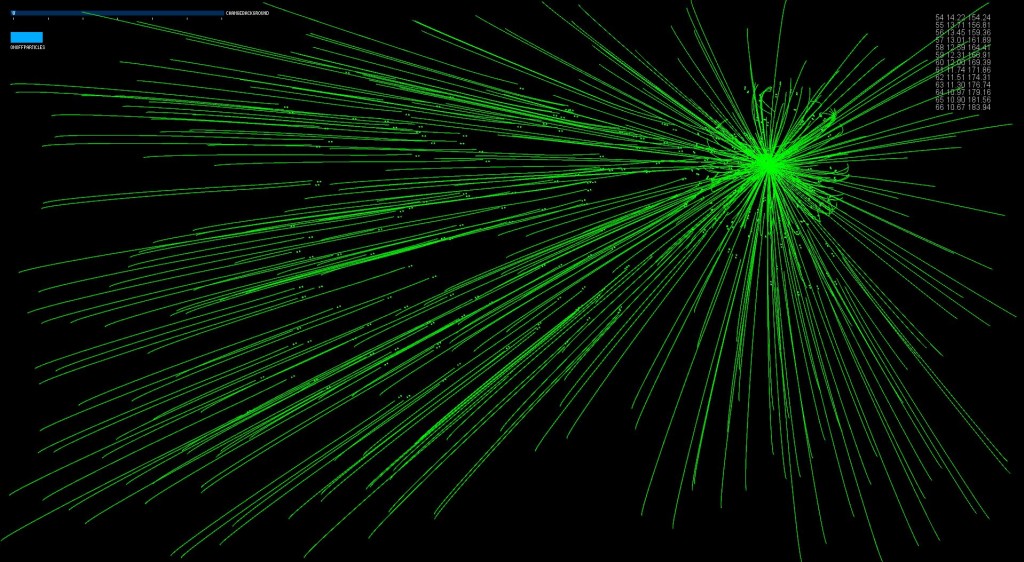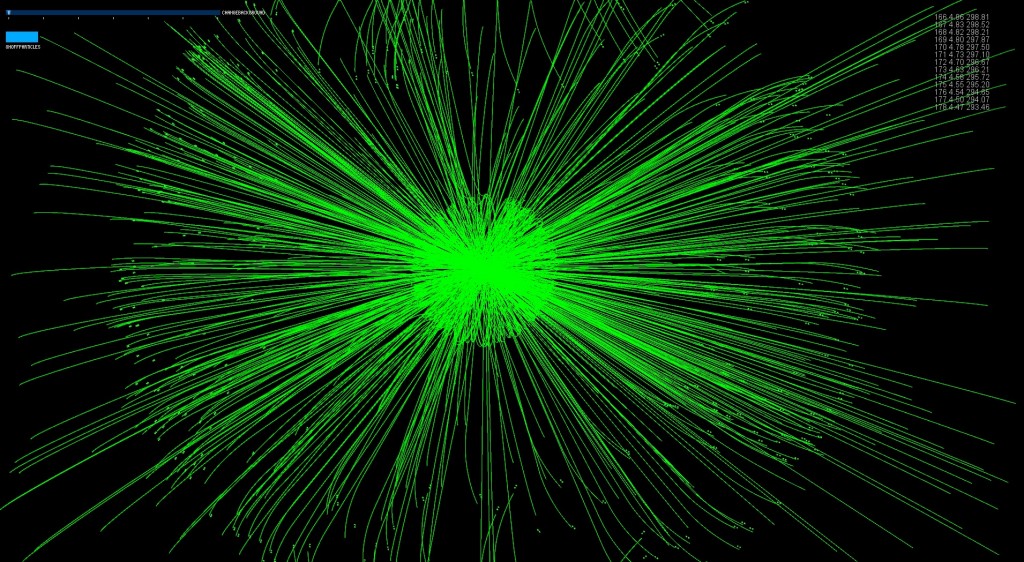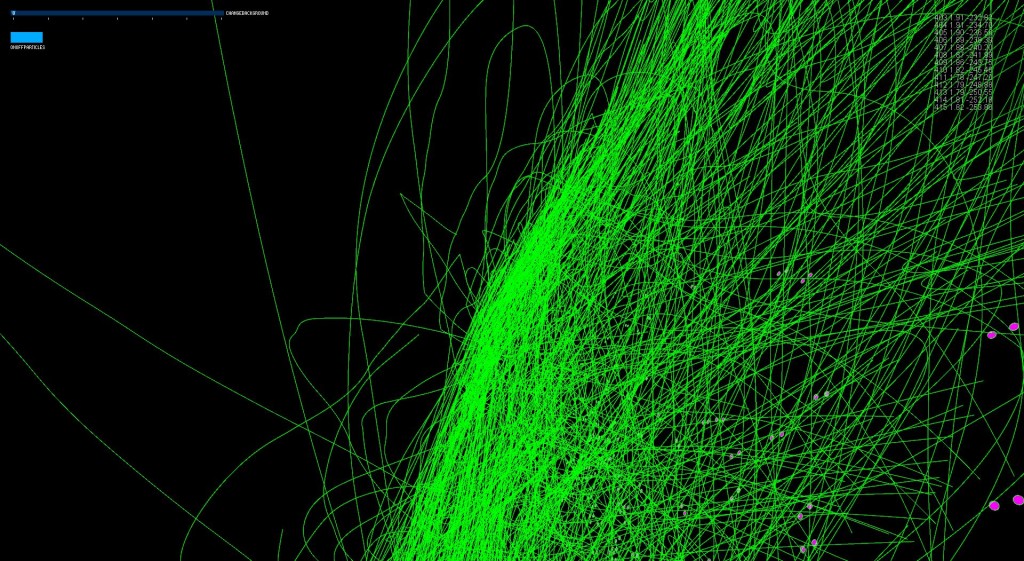Charge Interactions
Atom: the smallest component of an element having the chemical properties of the element, consisting of a nucleus containing combinations of neutrons and protons and one or more electronsbound to the nucleus by electrical attraction; the number of protons determines the identity of the element.
Proton: a stable subatomic particle occurring in all atomic nuclei, with a positive electric charge equal in magnitude to that of an electron.
Electron: a stable subatomic particle with a charge of negative electricity, found in all atoms and acting as the primary carrier of electricity in solids.
The script simulates behavior of protons and electrons of an Atom. The mouse pointer acts as the main Proton inside the nucleus and the particles are the protons or electrons.
Forces of attraction and repulsion act depending on the condition of the particles – opposite charges attract and like charges repel.
When the particles behave as electrons, there is an Attraction Force where these follow the main Proton. On the other hand, when the particles behave as protons, there is a Repulsion Force where the particles repel from the main Proton.
The interface incorporates a slider, a button, and an information window. The slider controls the color of the background, being able to change from 0 to 255 the grey shade. The button acts as an ON/OFF button where the movement of particles is controlled. If the button is switched Off, the particles stop moving (pause) and the screen turns off. When the button is turned On, the script continues and particles move.
The particles can be manipulated to draw/leave trails. When particles move in 3D space, they can draw a complex pattern which can be either 2D or 3D printed. These trails have the same width as the particles, generating a weave shape similar to a bird´s nest.





